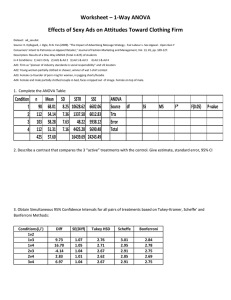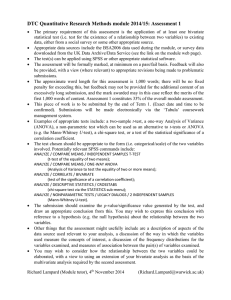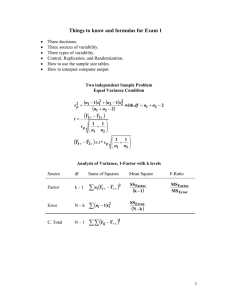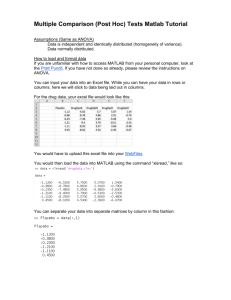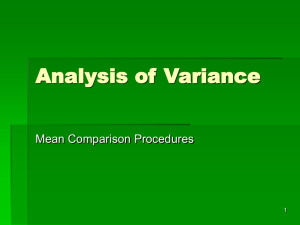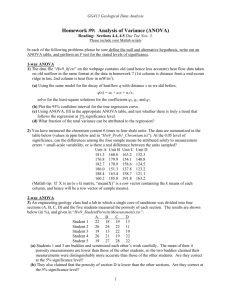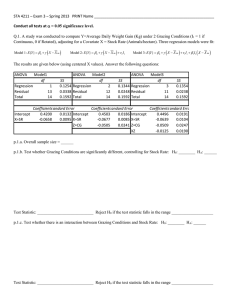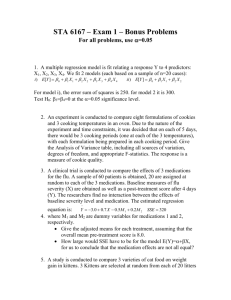Comparison of more than two samples
advertisement
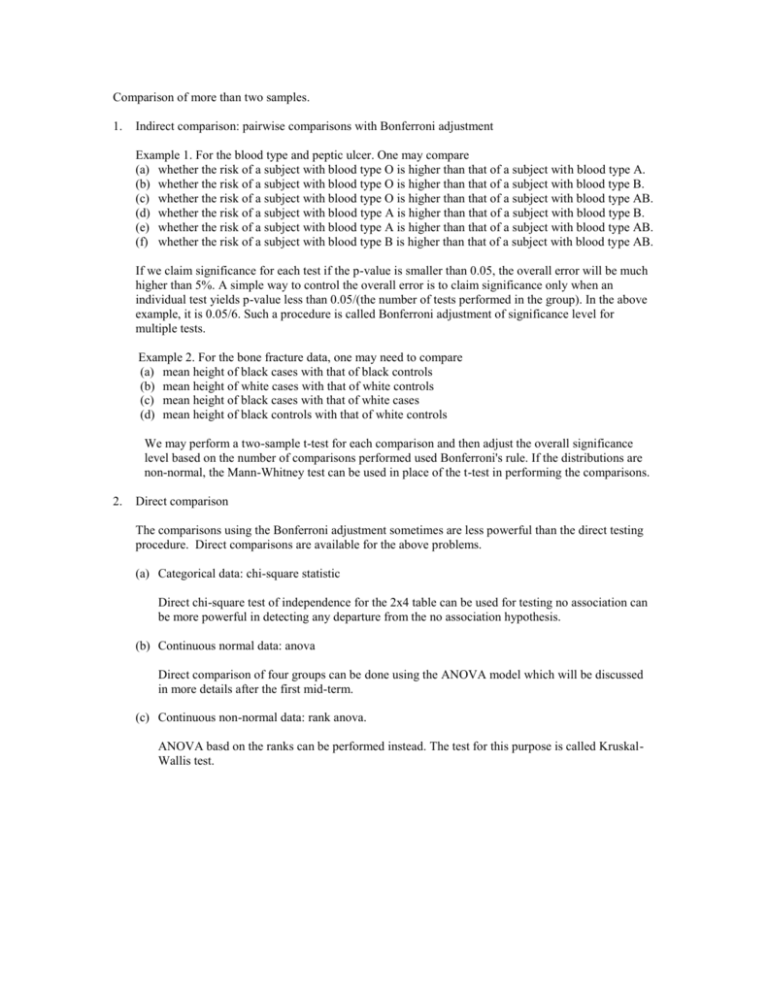
Comparison of more than two samples. 1. Indirect comparison: pairwise comparisons with Bonferroni adjustment Example 1. For the blood type and peptic ulcer. One may compare (a) whether the risk of a subject with blood type O is higher than that of a subject with blood type A. (b) whether the risk of a subject with blood type O is higher than that of a subject with blood type B. (c) whether the risk of a subject with blood type O is higher than that of a subject with blood type AB. (d) whether the risk of a subject with blood type A is higher than that of a subject with blood type B. (e) whether the risk of a subject with blood type A is higher than that of a subject with blood type AB. (f) whether the risk of a subject with blood type B is higher than that of a subject with blood type AB. If we claim significance for each test if the p-value is smaller than 0.05, the overall error will be much higher than 5%. A simple way to control the overall error is to claim significance only when an individual test yields p-value less than 0.05/(the number of tests performed in the group). In the above example, it is 0.05/6. Such a procedure is called Bonferroni adjustment of significance level for multiple tests. Example 2. For the bone fracture data, one may need to compare (a) mean height of black cases with that of black controls (b) mean height of white cases with that of white controls (c) mean height of black cases with that of white cases (d) mean height of black controls with that of white controls We may perform a two-sample t-test for each comparison and then adjust the overall significance level based on the number of comparisons performed used Bonferroni's rule. If the distributions are non-normal, the Mann-Whitney test can be used in place of the t-test in performing the comparisons. 2. Direct comparison The comparisons using the Bonferroni adjustment sometimes are less powerful than the direct testing procedure. Direct comparisons are available for the above problems. (a) Categorical data: chi-square statistic Direct chi-square test of independence for the 2x4 table can be used for testing no association can be more powerful in detecting any departure from the no association hypothesis. (b) Continuous normal data: anova Direct comparison of four groups can be done using the ANOVA model which will be discussed in more details after the first mid-term. (c) Continuous non-normal data: rank anova. ANOVA basd on the ranks can be performed instead. The test for this purpose is called KruskalWallis test.
